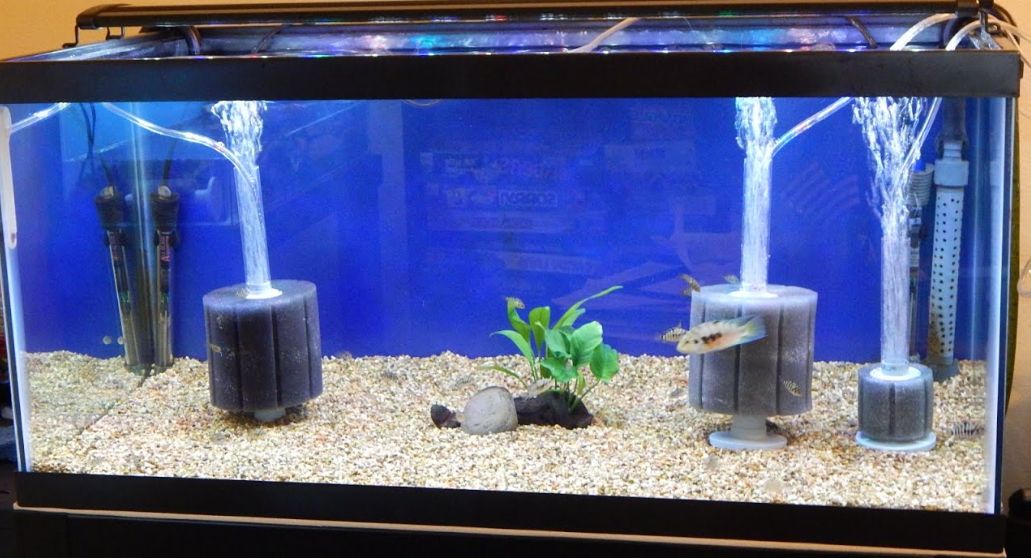
Sponge filters are probably the least expensive filter. Sponge filters typically are holed cylinders of gray foam about four to six inches in diameter and four to eight inches tall with an air tube coming out the top. To operate this filter air is pumped into an airlift tube to draw water through the sponge.
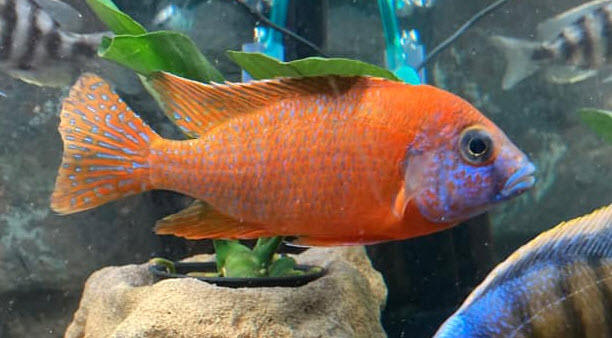
There are two uses for sponge filters:
- The first use is as a mechanical filter. This is where one cleans the filter once a week or so. The frequent cleaning removes any beneficial bacteria that might build up before it can become effective at oxidizing ammonia. But the frequent cleaning does remove the solids that are floating about the aquarium. Sponge filters typically have too low of a flow rate to be good mechanical filters but many use them this way.
- The second use is where one only lightly cleans the filter only when it becomes clogged, like every two months or more. This allows the filter to become a good biofilter.
If one uses the sponge filter as the first use, only a mechanical filter, then one must have another filter in the system to do biofiltration. We will only address using a sponge filter as a biofilter.
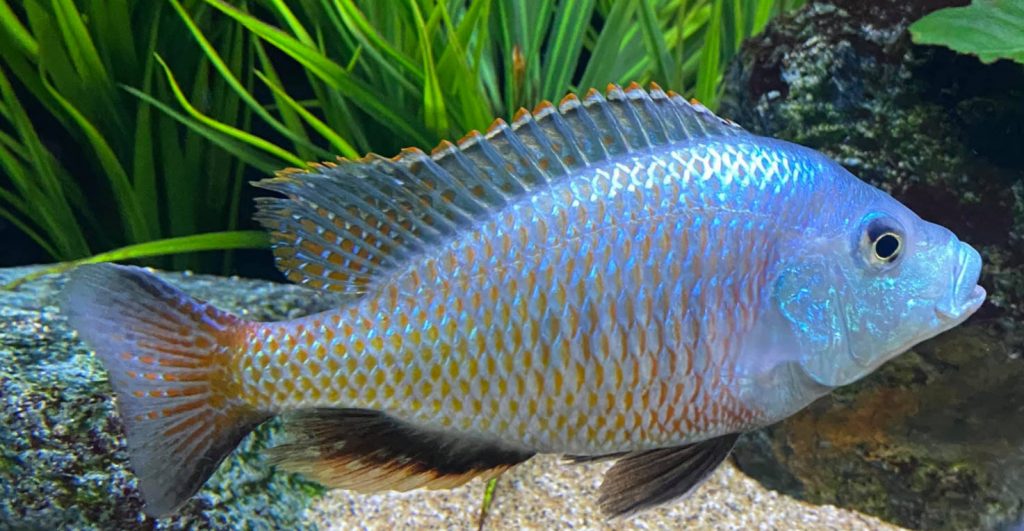
Sponge Filters and Biofiltration
Simple sponge filters do a surprisingly good job of biofiltration (breakdown of ammonia to nitrate) with a low consumption of electric power IF AND ONLY IF they are decent sized. They also do a surprisingly good job of aeration. Unfortunately they are just not very attractive in the aquarium. And air pumps can be VERY noisy,
The biofiltration capacity of a 30 ppi foam sponge filter is VERY dependent on the size of the sponge. Here are some calculations:
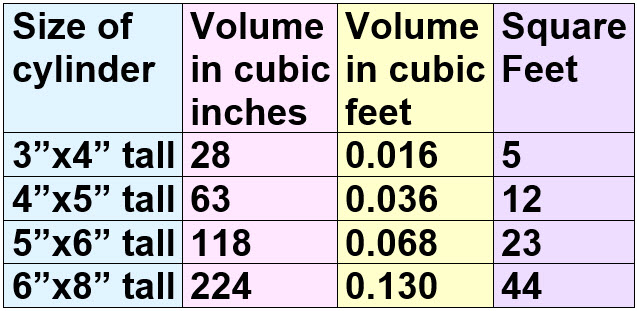
Obviously the very small sponge filters are only suitable for small betta tanks or nano tanks. But the larger sponge filters have a decent square footage. Unfortunately the larger the sponge the uglier it is in the aquarium.
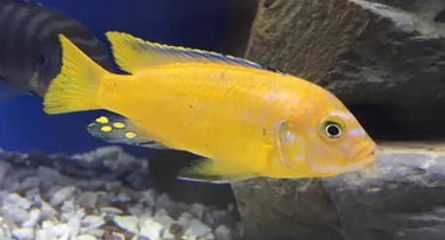
Sponge filters are ugly and obtrusive in the aquarium. Many aquarists use them in bare bottom breeding aquariums, where the slow flow through the sponge doesn’t trap the baby fish and aesthetics is not an issue. There are many professional breeding setups that use a large centralized air pump (invariably this produces a LOT of noise) to power between 10 and 50 aquariums with sponge filters in them. In large aquariums there may be three large sponge filters.
One note on the foam in sponge filters. There are some sponge filters from China that use what appears to be 40 ppi foam. This foam will quickly clog. When buying a sponge filter make sure the foam is coarse, preferably 20 ppi (pores per inch) foam or 30 ppi foam.
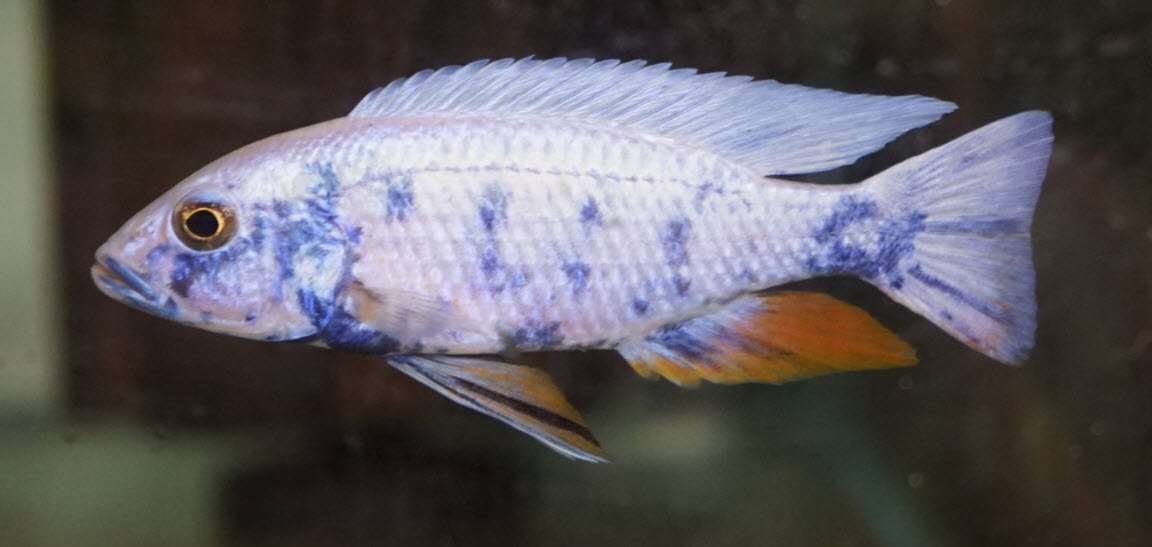
And the type of air lift used is important. Most sponge filters use a simple hole to produce very large bubbles that rise in the air lift tube. The large bubbles are very noisy and throw spray in all directions when they surface. Large bubbles also do not lift a lot of water. Modify any such filter to use an air stone or a lift that has a bunch of small holes drilled into it. Note that in hard water air stones only last a few months and then need to be replaced.
Other sponge filter have large center constructions that allow an air stone to be used. The many small bubbles of an air stone lift much more water than the large bubbles of the hole. So sponge filters that use airstones are much better than holed sponge filters. The ideal air bubble size is about one tenth of an inch.
And the amount of air going into the air stone is important. Too much air and the air bubbles collide and coalesce. These large bubbles don’t lift water very well and they are very noisy (think “gurgle gurgle”). Too little air and there is little lift.
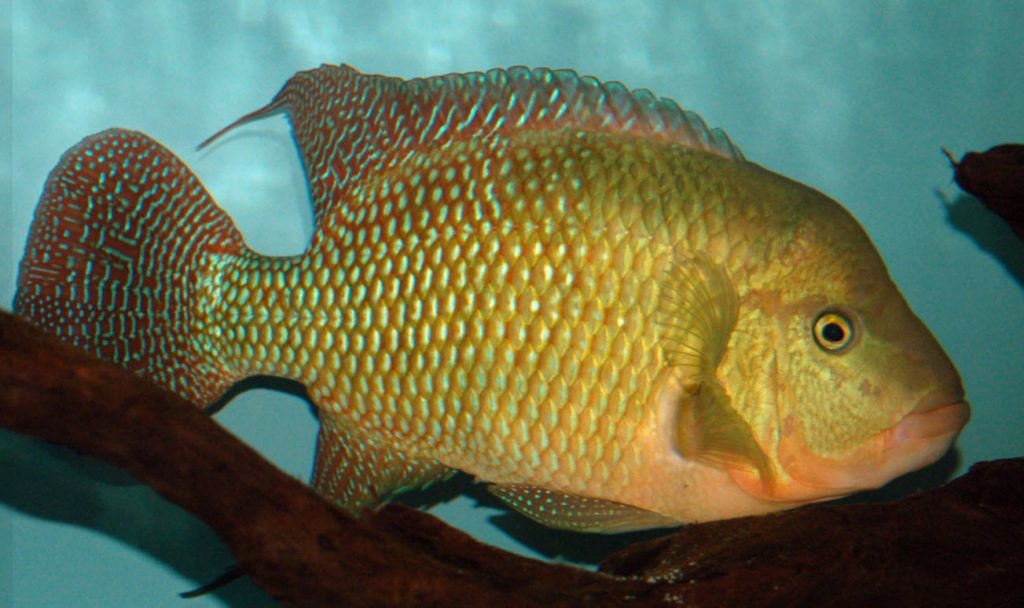
“Best” Sponge Filter
The best commercial sponge filter designs I have come across are the 20 ppi sponge filters from Aquarium Co-op. They have the right size of foam, and they have a heavy weighted bottom which prevent the sponge from floating. It is definitely the best sponge filter to buy. And buy the large or medium sponge if possible. The two smaller sizes are simply too small for ANY tank.
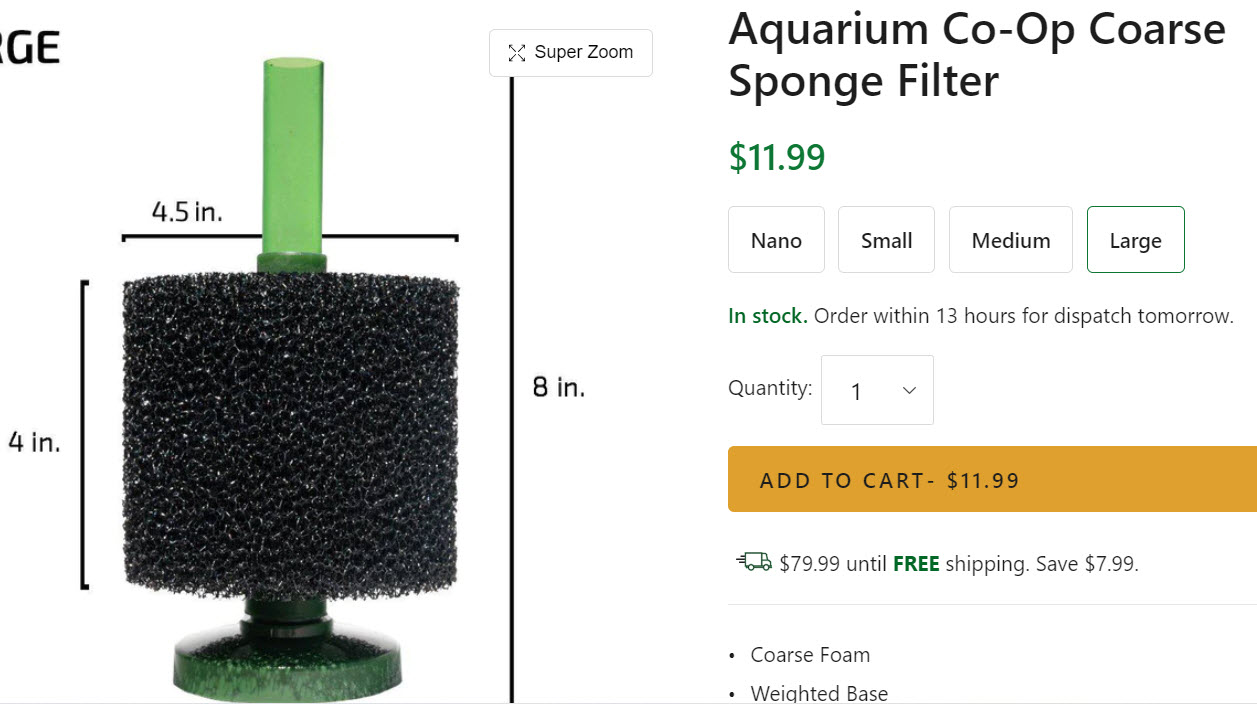 .
.
And note I am NOT affiliated in any way with Aquarium Co-op.
Here are some other decent sponge filters: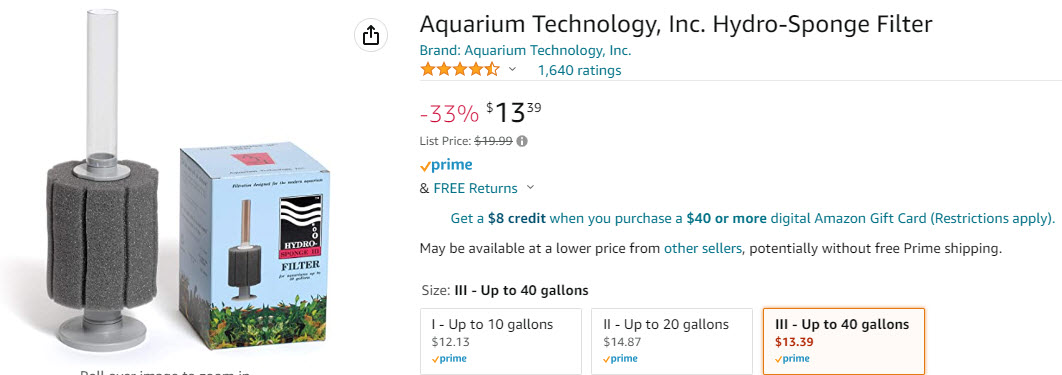
.

.
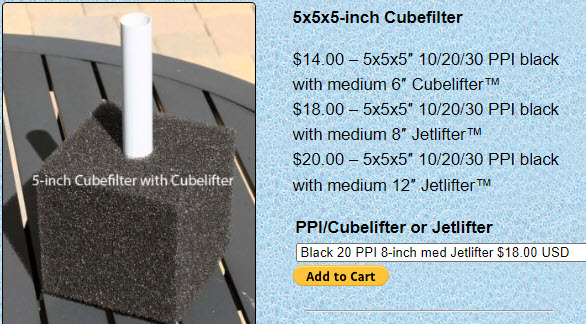
.
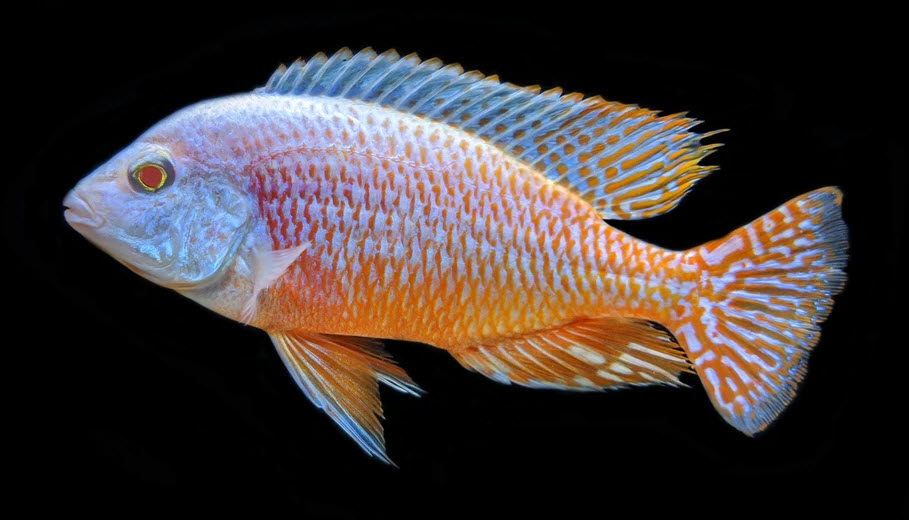
“Supercharging” Sponge Filters
To “supercharge” any sponge filter remove the air tube and adding a small powerhead on the lift of sponge filters. This makes a sponge filter a somewhat better filter. It takes the flow rate up.
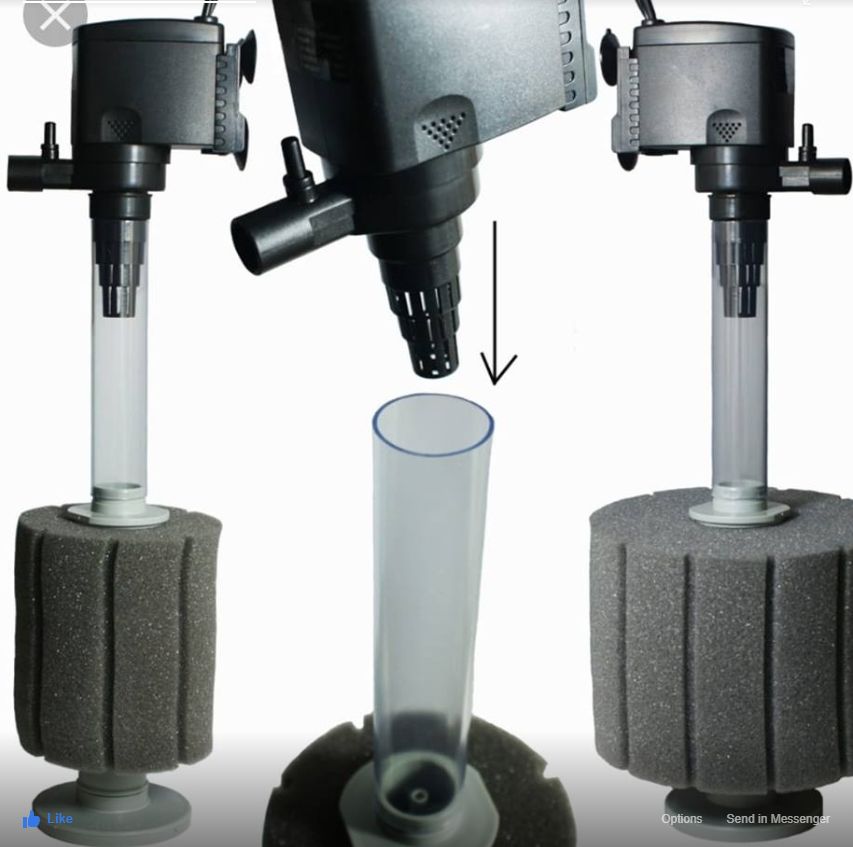
There is also a variety of small sponge filter where a powerhead sucks water through a sponge which is encased in a black plastic casing. This “internal canister filter” is much more attractive than a normal air operated sponge filter and is an excellent option for a small aquarium.
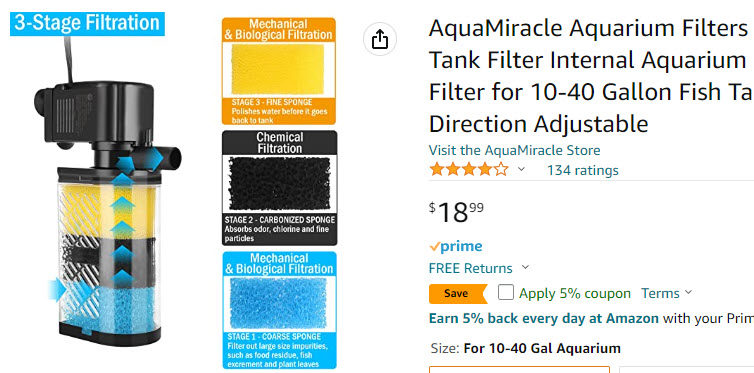
One interesting point about using a powerhead on a sponge filter. One would think that a powerhead would give more feces and “brown gunk” on the outside of the sponge and thus make the sponge more unattractive. In truth the opposite occurs. It appears that the faster the water flows over debris the faster the debris decomposes. This probably has to do with oxygen distribution in the debris.
Note that sometimes hobbyists put a large powerhead on a small 40 ppi sponge filter. The sponge will rather rapidly collapse in this situation. The ideal is a small powerhead on a large 20 ppi sponge filter.
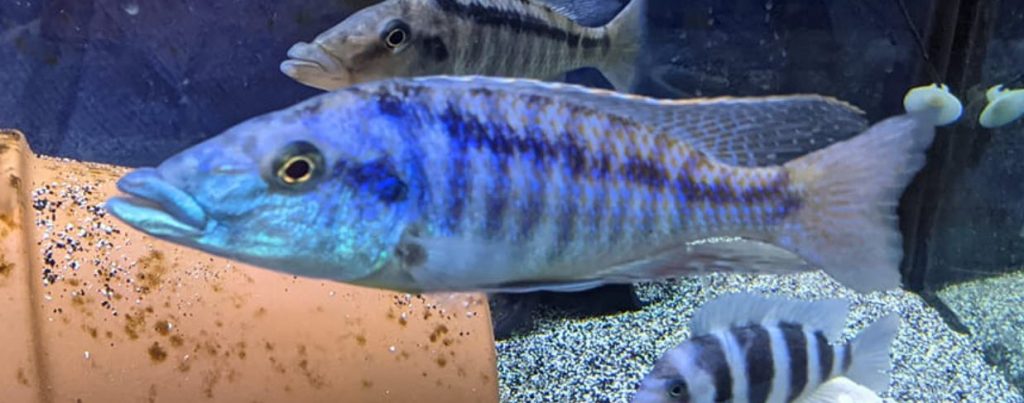
How does a Sponge Filter Work?
There is bad “gunk” consisting of fish waste and uneaten food which resides on the outside of the sponge filter. Then there is the good “gunk” which resides on the inside of the filter and which consists largely of beneficial ammonia oxidizing bacteria.
It’s when these filters are cleaned that problems can occur. The colonies of beneficial bacteria (the good “gunk”) inside these sponge filters takes up to one to three months to grow to a sufficient size to do a good job after a thorough cleaning. So, these filters, just like all filters, only work well if you don’t clean them very often.
From the Poret Foam (the same thing as “sponge”) Supplier (Swiss Tropicals):
“The purpose of the foam is not to filter the water as is often assumed. The foam serves as the habitat for a vast array of microorganisms that include bacteria, archaea, worms, ciliates, flagellates, and many others. These microorganisms live in a community that is based on biofilms. The biofilms are created by bacteria that secret extracellular polymeric substance (EPS), which is often called “slime”. The community forms a bioreactor that processes the waste and turns it into food and energy for its members, and ultimately into organic or inorganic products that are then used by plants, evaporate, or removed by water changes. It takes a considerable amount of time to establish this “filter community”; consequently, it is very important not to disturb it unless absolutely necessary. The brown filter sludge in a filter is for the most part alive and not simply waste. Removing this mud does more harm than good.”
This is probably the most intelligent write up any supplier of aquarium products has ever made. It is 100% correct on all points.
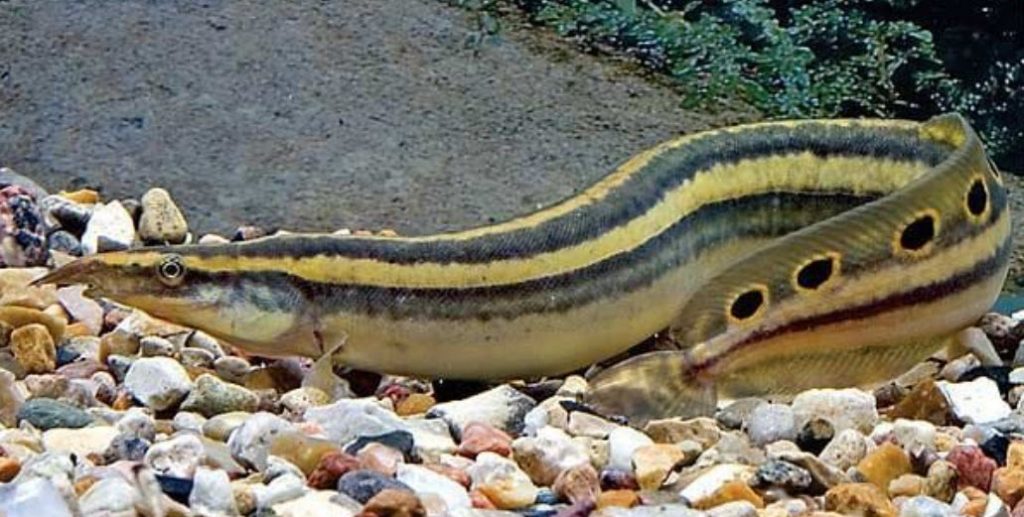
Cleaning Sponge Filters
Some people clean their sponge filters thoroughly on a regular basis. Some people as often as once a month. But these folks use a trick. They have two sponge filters in each aquarium. They only clean one at a time. So the several days that it takes for a thoroughly cleaned sponge to recover is covered when it comes to ammonia. The uncleaned sponge does the work. This is a decent strategy.
An experiment was run on sponge filters to test the claim that cleaning a sponge filter does more harm than good. Nine sponge filters were run with protein powder for sixteen weeks to buildup a large amount of brown gunk inside them. They were then squeezed them under a faucet (unchlorinated well water) a set number of times. Ammonia was added at the 8 ppm level, then the ammonia level was measured at three day periods. These are the results:
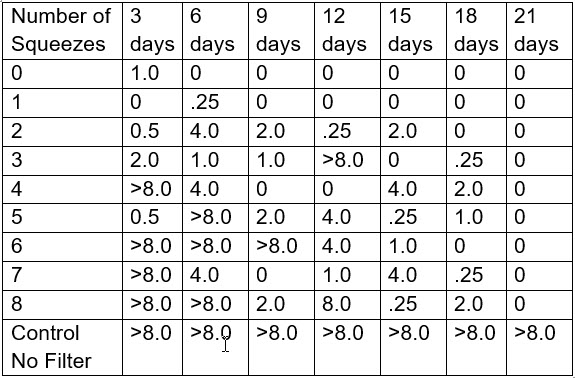
These results were surprising. Conventional wisdom is that the sponges would all come back in a 6 to 9 day time period, not 18 days.
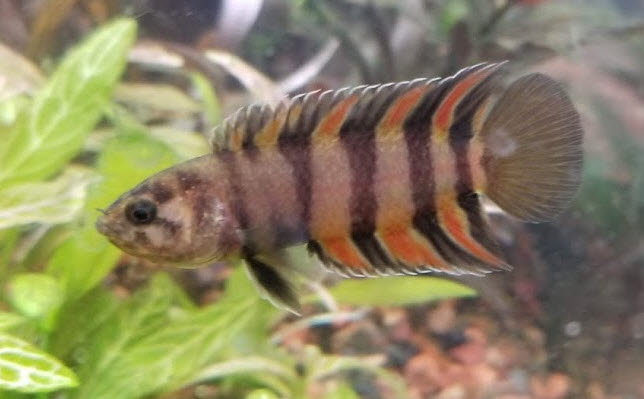
This test was then continued in several variations. These multiple tests established that:
- Cleaning a newly established (months) sponge filter under RUNNING unchlorinated well water OR RUNNING chlorinated water removed virtually all the beneficial bacteria
- Cleaning a newly established (months) sponge filter by SWISHING back and forth in a pail of unchlorinated well water OR chlorinated water left significant amounts of beneficial bacteria in the filter.
- Cleaning a LONG ESTABLISHED (years) sponge filter under running unchlorinated well water OR chlorinated water left significant amounts of beneficial bacteria in the filter.
So you never want to clean a relatively new filter media in running tap water, period. You can get ammonia spikes. And you want to only partially clean the filter media, not thoroughly clean it. Thorough cleaning can give ammonia spikes. But old established filters can be thoroughly cleaned under running water and will come back very rapidly to full strength. It appears there is a very tenacious biofilm which takes many months to form in sponge filters. And chlorine is NOT a problem in any situation.
These tests are explained completely in this link:
6.8. Thorough Cleaning of a Filter
.
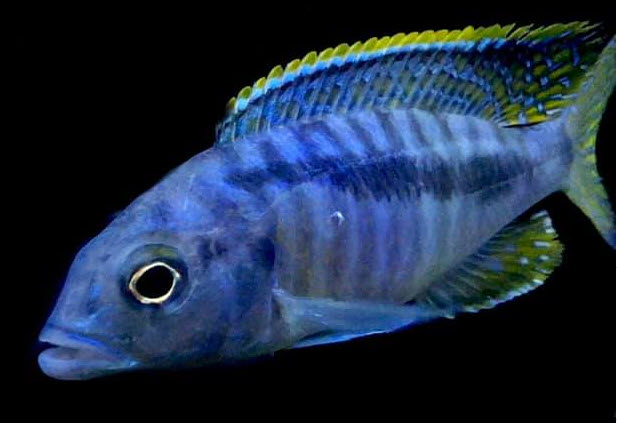
One very good YouTube presenter runs about 40 heavily stocked breeder tanks on only two air operated sponge filters per aquarium. Their water is very clear and their fish very healthy! They clean the sponge filters under running chlorinated water every two weeks alternatively. Not the way I would do it but it is working just fine for them. This illustrates just how forgiving the fishkeeping hobby can be. Their sponge had some very tenacious beneficial biofilms on them which gave them success.
There was one YouTube video maker who cleaned her sponge filters once a month very thoroughly and then soaked them in bleach to “clean” them. This is just kind of sadly funny. This is a YouTube video maker with no understanding of the nitrogen cycle at all.
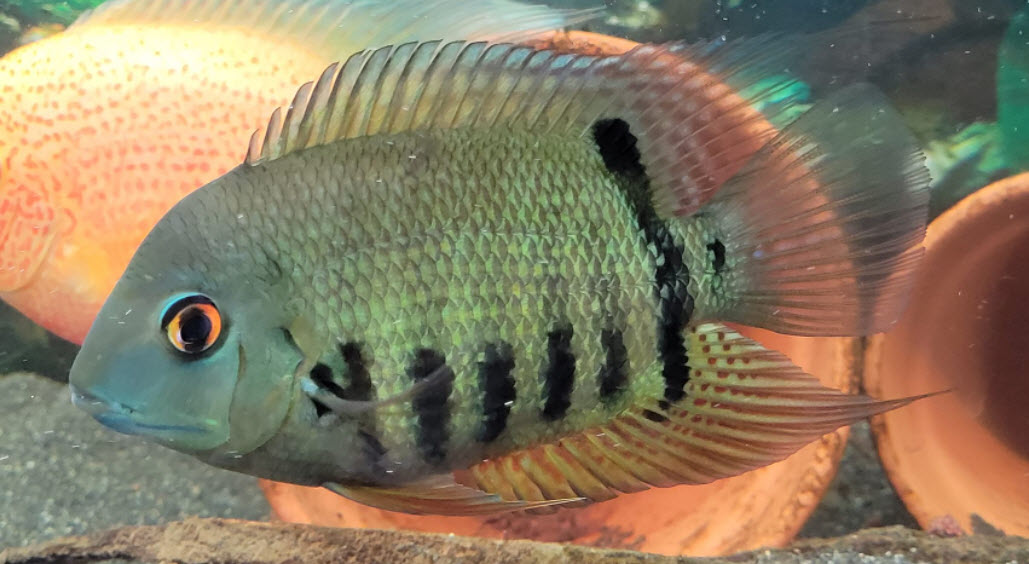
Note that one trick is very useful in cleaning sponge filters. Cory of Aquarium Co-op (probably the brightest “Guru” in fishkeeping) uses plastic bags to take sponge filters out of the aquarium to clean them. He puts the bag under the sponge filter in the aquarium, then lifts water and sponge filter out of the aquarium. This way one avoids a whole lot of debris dropping into the aquarium. Bright idea!
.
Return to Filters Menu
.
Aquarium Science Website
The chapters shown below or on the right side in maroon lead to close to 400 articles on all aspects of keeping a freshwater aquarium. These articles have NO links to profit making sites and are thus unbiased in their recommendations, unlike all the for-profit sites you will find with Google. Bookmark and browse!
.

Dave says
In reply to Alan ….. I’m afraid I’ve never done anything even approaching “scientific” with sizing of air pumps so I have no answer for you. Sorry.
Alan says
Hello, Great website, I get all my info from here, I wanted to know how big should the air pump be to work sufficiently with the Maxx clean course sponge filter that you recommend, I was thinking of using the Eheim 400 with one, Thank you.
Dave says
In reply to Alex …. Beneficial bacteria will keep up with the snails.
Alex says
Hi, I recently switched from the Hikari to Aquarium Co-op sponge filter after reading your article. I realized something. Since the sponge is a lot denser, critters like snails could easily get inside and eat away at the biofilm which is helping keep the water clean. Is this an issue at all, or will the bacteria reproduce quick enough?
Dave says
In reply to Konliner …. I’m not a big fan of HOBs so I would say either an undergravel or a sponge filter is almost a requirement for you. Locate the sponge as far away from the HOB as possible. And beneficial brown gunk and beneficial detritus (same stuff) grow in and on a sponge filter. Just let it go and you will be fine.
Konliner says
Hi, Dave.
I have questions :
1.Is it a good idea to have both sponge filter and HOB filter in one tank ? I currently have HOB and want to add sponge filter. Also, should the sponge filter be located near the HOB or far away from it ?
2.Do brown gunks also grow inside sponge filter ? Would detritus growing around the sponge infect the fish ?
Ben z says
When buying in tank sponge filters with a powerhead, check that the foam is of good quality… a lot of them “shrink” after a year or so. It’s better to buy a poret slab and cut it to size to fit those filters, if possible. Or stuff scrubbers in instead.
Speaking from experience here, I’m a filter collector. Have owned and tried practically every type of aquarium filter out. And am now working on customizing small wastewater plant filters for aquaculture. At this point I’m probably the biggest filter nerd out there…